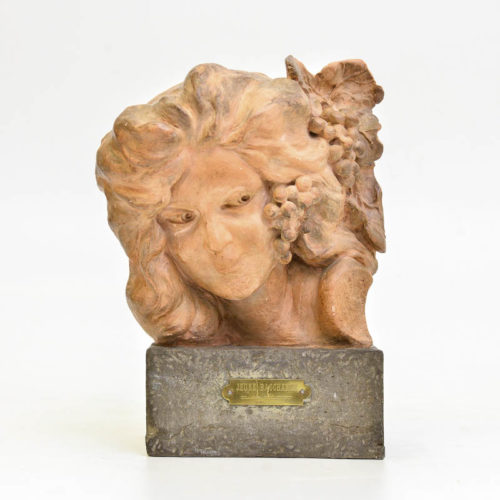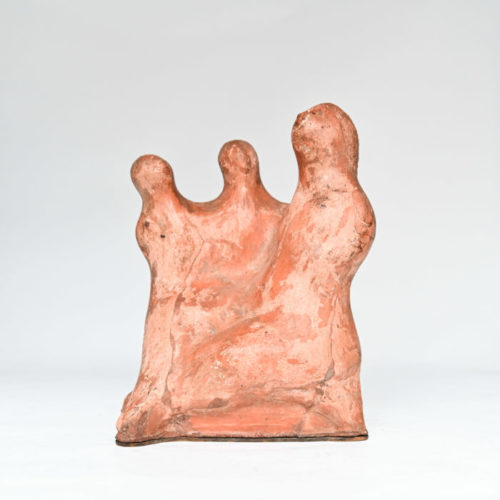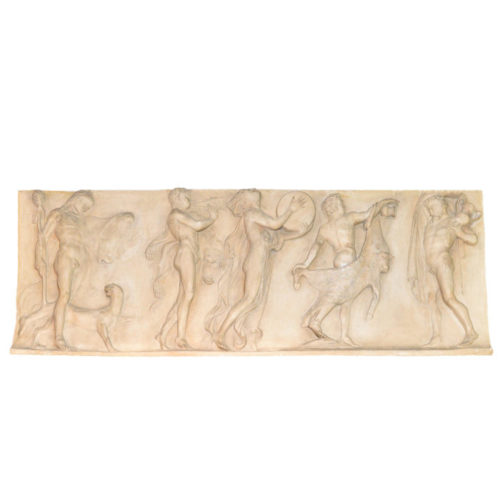Terracotta panel depicting a classical scene. On the back the Manifattura di Signa brand. In excellent condition.
The Manifattura di Signa is a historic terracotta pottery workshop. It was created in 1895 by the will of Camillo Bondi.
"At the beginning of the twentieth century Signa was still one of the major industrial centers of straw. To that industry, which had made the name of the town known beyond national borders, was added another activity which, since the last five years of the nineteenth century and in a short space of years, it would have relaunched its name on the European and American markets: the artistic terracotta industry "Manifattura di Signa", founded in Signa (Florence), in 1895 by Camillo Bondi, on the premises of the factory " Fornaci di Signa "owned by his brother Angelo. At that time, the taste for antique fakes continued to seduce with all its charm, and in ceramics the interest in tradition had prompted the most important Italian manufacturers to revisit shapes and decorations Renaissance, reaching the ancient virtuosity of the historiated and grotesques with a high craftsmanship. If those productions interpreted the ancient with typical nineteenth-century eclecticism, the Manifattura di Signa on the other hand, it generated the perfect resemblance of the truth, both through the forms used when possible on the original, and by means of patinas simulating those of marbles and bronzes and even the faults of time, in order to obtain the appearance of the authentic piece, and visually as well as tactile and, in some bronzes, also sound. With this spirit, reproductions of sculptural and decorative masterpieces of all times will take shape from the Arno mud: from Etruscan to Greek statuary, from Roman to Renaissance, from Moorish vases to contemporary Art Nouveau creations. The success that ensued is witnessed by numerous exhibition awards such as the medal at the Universal Expo in Paris in 1900, where he exhibited numerous plastic terracotta, suitable for decorating the exteriors, with a particular patination that made it look better and more resistant to agents. atmospheric, soon expanded the number of occupations and the specialization of young artists assisted by the experience of sculptors of excellent fame, called to Signa for new ideas by the Bondi brothers, the brilliant founders and conductors of the Manufacture, coming from a family of Leghorn Jewish high bourgeoisie and close to the intellectual and anti-positivist environment of the Florentine magazine of “Il Marzocco”. With the new industry an informal school of young workers was thus generated in the Signe who, despite lacking regular education, growing under the experience of sculptors and in contact with the most sublime models of universal classicism, a real concentrate of museums in the world , were naturally stimulated and educated in the beauty and proportions of forms, so much so that they became refined craftsmen, plasticizers, sculptors, able to give life to other similar manufactories. "
There are many artists who have collaborated with the Signa Manufacture: Oreste Calzolari, Giovanni Prini, Giulio Cantalamessa, Adolf von Hildebrand, Raffaello Romanelli, Giuseppe Santelli, Renato Bertelli, Giovan Battista Casanova, Bruno Catarzi, Italo Griselli


